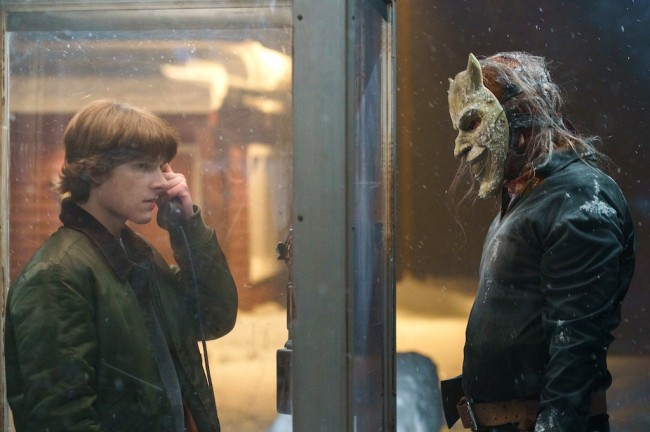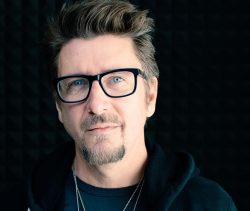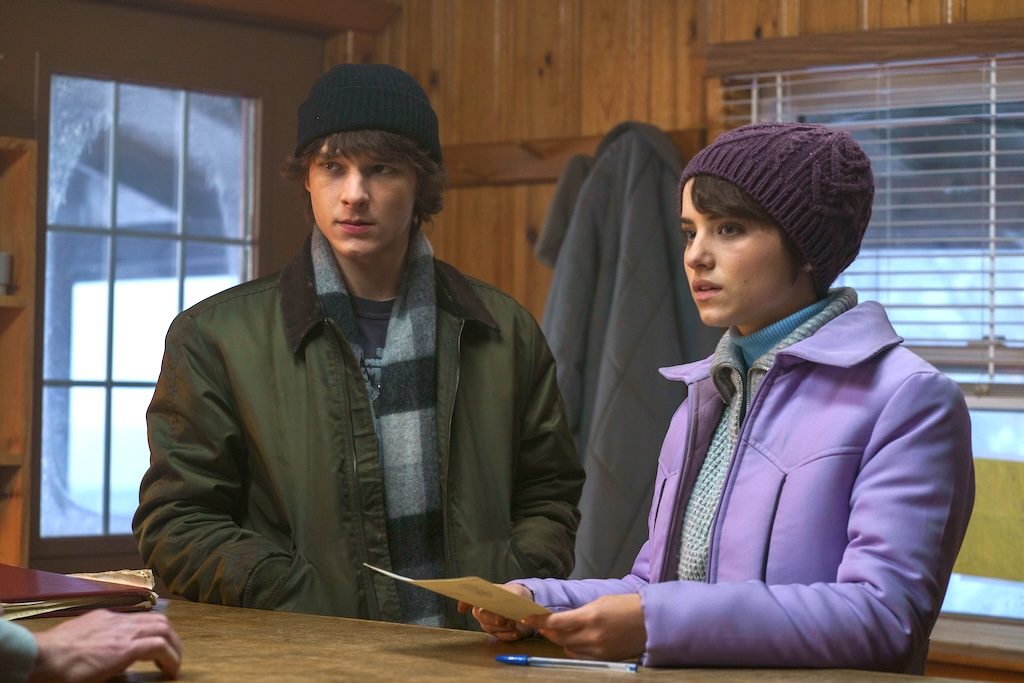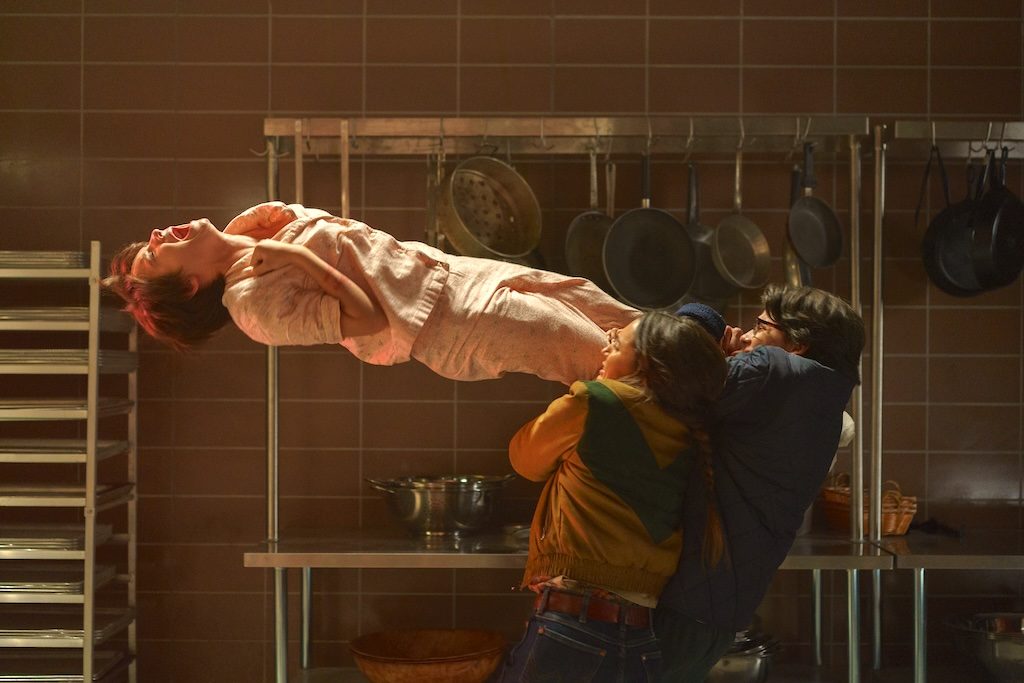How Black Phone 2 Deepens Its Mythology: Scott Derrickson on Gwen, Finn, and the Grabber’s Return

This interview contains major spoilers.
Black Phone 2 picks up in the shadow of the first film’s harrowing events, with Gwen (Madeleine McGraw) and Finn (Mason Thames) still reeling from their ordeal at the hands of the Grabber (Ethan Hawke). Now teenagers, they find themselves grappling with trauma as they enter high school, while the world around them has grown far more complex — and dangerous. Writer/ director Scott Derrickson returns to expand the film’s universe with co-writer Robert C. Cargill, shifting the action from the familiar streets of North Denver to the isolated, snowbound landscape of Alpine Lake.
Here, Derrickson weaves together timelines and genres, blending elements of sequel, prequel, and origin story to create a multifaceted horror narrative that deepens the mythology of the original Black Phone universe which began as a short story written by Joe Hill, Stephen King’s son.
Scott Derrickson joined Creative Screenwriting Magazine to discuss his approach to Black Phone 2 and the creative collaboration that shaped its haunting narrative.
A New Beginning: Revisiting Gwen and Finn
Derrickson’s first challenge was deciding when and how to revisit the lives of Gwen and Finn four years later. “I wasn’t convinced that a sequel needed to be made and that I wanted to make one until I really started considering the possibility of waiting a couple of years until these kids got into high school,” Derrickson explains. “Who would these kids be in high school after going through this experience in middle school?”

Scott Derrickson
This temporal leap allowed Derrickson to explore the long-term consequences of trauma, shifting the genre from a coming-of-age thriller to a high school horror film. “That just opened up everything because that’s a very different type of movie,” he says. Rather than simply recreating or continuing the setting of the original, Derrickson sought to capture the emotional and psychological evolution of his characters as they confronted new threats.
Expanding the Universe: From North Denver to Alpine Lake
One of the most striking elements of Black Phone 2 is its expanded world-building. “What became immediately not interesting to me was to try to go back and recreate the same place,” Derrickson says. Instead, he drew on his own teenage experiences attending winter camps in the Rockies, using the harsh, isolating environment of Alpine Lake as both setting and metaphor. “In the winter, the weather becomes this powerful, secluding force of nature, that you feel is all around you and is actually dangerous and exciting at the same time.”
This new locale serves as a crucible for Gwen and Finn’s continued development, while also paying homage to classic camp ground movie tropes. Many of these were inspired by Halloween and Friday The 13th. “It tied into one of the great horror tropes of the early 80s… the killer at the campground,” Derrickson notes, “but we had the freshness of being at a winter camp, which I hadn’t seen on screen before.”
The idea of the Grabber on ice was lifted from the 1983 film Curtains.
Genre Influences and Cinematic DNA
While Black Phone 2 is unmistakably its own film rather than a sequel or prequel, Derrickson acknowledges the influence of horror genre classics. “The only one that was undeniable was Nightmare on Elm Street because I was talking about bringing back a masked killer from the dead as a vengeful ghost,” he states. “But I didn’t have the ambition of trying to create a new Freddy Krueger.”
He also points to the impact of The Shining and the proliferation of the camp-killer movies in the early 1980s. “There were dozens and dozens of knockoffs, Sleepaway Camp and movies like that,” he mentions, “and that’s when I actually got excited about the fact that there were all these influences at play that I wasn’t really conscious of.”

Finn (Mason Thames) and Gwen (Madeleine McGraw) Photo courtesy of Universal Studios
Blending Practical and Supernatural Horror
Derrickson’s approach to horror in Black Phone 2 combines grounded, practical scares with supernatural elements rooted in the dreamscape. “In the first draft of the script, I was very concerned that the movie was going to be impossibly confusing… having clarity about when you’re in a dream and when you’re not in a dream,” he recalls. To differentiate between realities, Derrickson shot all dream sequences on Super 8 film, a visual technique that “became a pretty simple device that I thought would help a lot.”
Despite the script’s structural complexity, the result is a film that skillfully intercuts between waking and dream worlds, pulling the audience into a state of uneasy suspense. “It’s all there in the script, but when you’re reading so many slug lines of back to digital, back to Super 8, back to digital… it’s not an easy read by any means.”
Calibrating the Scares: Building a Modern Ghost Story
Rather than relying on relentless slasher violence, Derrickson opts for a more measured, psychological horror approach. “This one functions from the beginning much more like a traditional ghost story,” he explains. “Here are these dreams and… what do they mean? Who are these dead children that Gwen is dreaming about?”
The film’s mystery builds gradually, with the Grabber’s presence looming long before his physical reappearance. “It was a bit of a daring choice. I think it’s the choice the studio was the most nervous about. All the way up to the end, I think they were really convinced that the audience was going to need the Grabber to appear earlier. And that turned out to not be the case.”
As Derrickson notes, “Once the real horror begins, the film becomes more dangerous than the first one. This is a more violent film. And it’s more graphic. And then I had to deliver on that some more as the movie went on.”

Gwen (Madeleine McGraw), Mustang (Arianna Rivas) and Ernesto (Miguel Mora) Photo courtesy of Universal Pictures
Collaboration and Story Development
The screenplay for Black Phone 2 is a product of close collaboration between Derrickson, original author Joe Hill, and co-writer Robert Cargill. Hill’s involvement was pivotal: “Joe’s big idea, in my opinion, really got me thinking about the movie was the idea that the Grabber had killed their mother. And that he was calling from the grave, calling from hell and that he was responsible for their mother’s death. That was interesting to me and I had never thought of that idea.”
Hill served as the creative team’s “big beta reader,” providing regular feedback on outlines and drafts. Cargill and Derrickson, meanwhile, alternated writing duties: “The writing process is usually one of me driving the storytelling, the outlining, what the movie is, what the inspiration is for it. And Cargill usually starts the blank pages before I do any blank page work. And then I sort of rewrite him and then I’ll jump ahead and be like, well, I’m going to write these three scenes.”
The Mystery of Evil: Deepening the Grabber’s Mythos
A central challenge of the sequel was expanding the Grabber’s backstory without demystifying him. “There was a fair amount of pressure put on me from the studio to give him more backstory,” Derrickson recalls. “But the mystery of the Grabber is part of his power in the first film. And so giving some backstory… I think is satisfying to fans of the first one because they are getting more of who he is. But at the same time, there’s still a great deal of mystery about him, about what drives that kind of sadism.”
Derrickson is adamant about avoiding simplistic explanations for evil. “There is great mystery in evil. In real evil, there is mystery,” he asserts. “Any attempts to psychologically or even philosophically… explain the why of it is to reduce it to something manageable. And things that are manageable are not so horrific. What makes something truly horrific is its unspoken and unspeakable, mysterious otherness.”
Join the Discussion!
Related Articles
Browse our Videos for Sale
[woocommerce_products_carousel_all_in_one template="compact.css" all_items="88" show_only="id" products="" ordering="random" categories="115" tags="" show_title="false" show_description="false" allow_shortcodes="false" show_price="false" show_category="false" show_tags="false" show_add_to_cart_button="false" show_more_button="false" show_more_items_button="false" show_featured_image="true" image_source="thumbnail" image_height="100" image_width="100" items_to_show_mobiles="3" items_to_show_tablets="6" items_to_show="6" slide_by="1" margin="0" loop="true" stop_on_hover="true" auto_play="true" auto_play_timeout="1200" auto_play_speed="1600" nav="false" nav_speed="800" dots="false" dots_speed="800" lazy_load="false" mouse_drag="true" mouse_wheel="true" touch_drag="true" easing="linear" auto_height="true"]










You must be logged in to post a comment Login